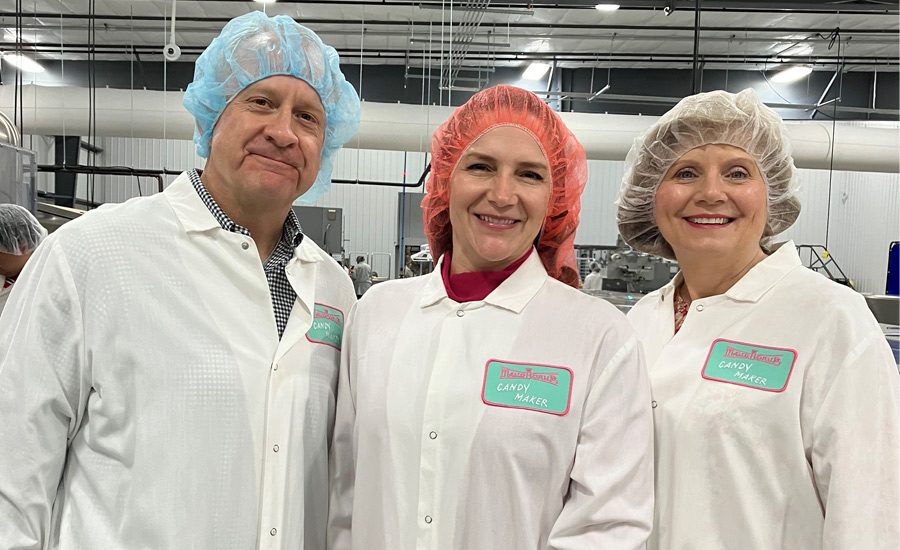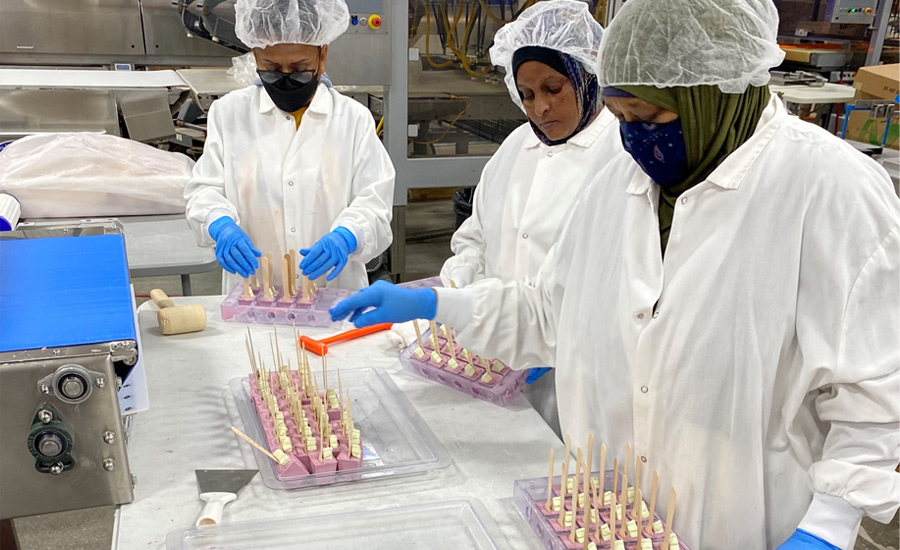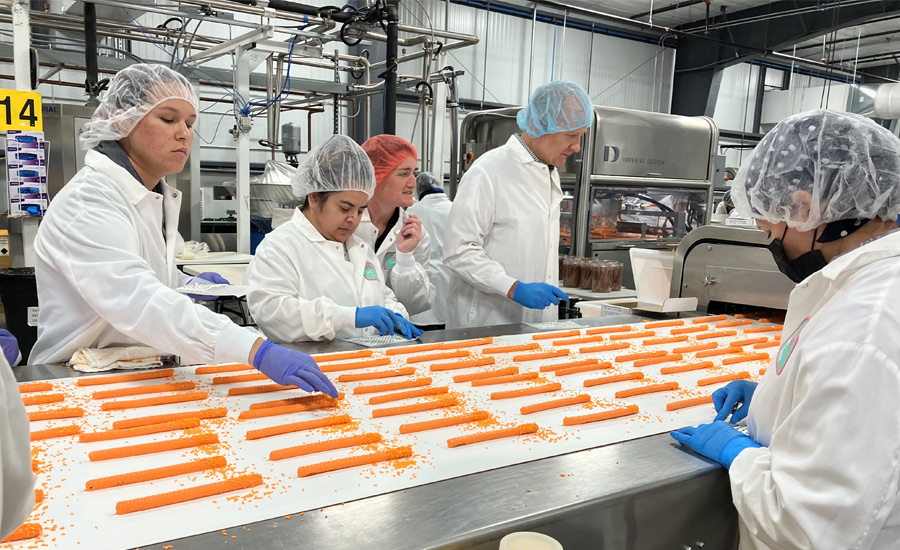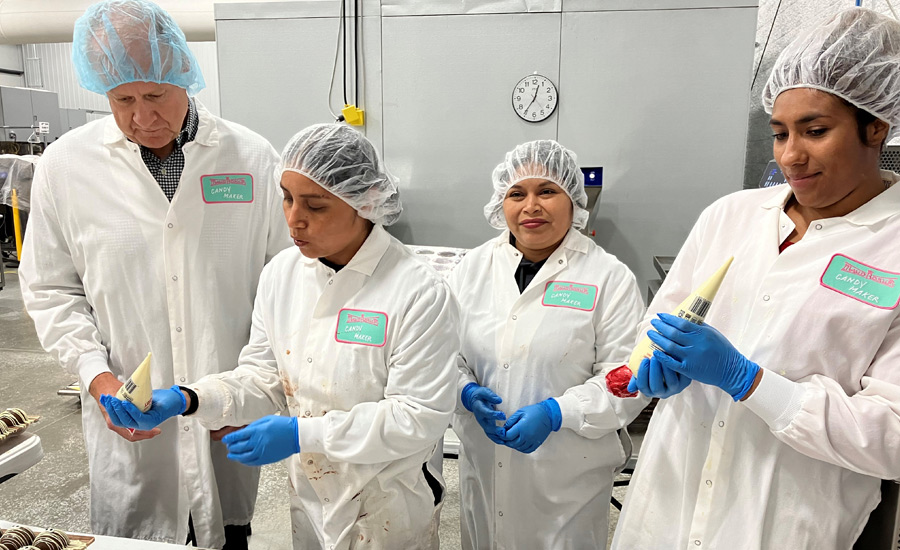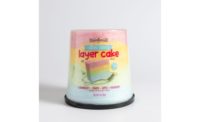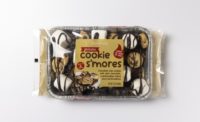The Bottom Line:
- Maud Borup originally started as a candy counter
- All products are manufactured in the U.S.
- The company continues to innovate in confectionery products
In 1907, Maud Borup began to make candy in her St. Paul, MN home. She used original recipes, high-quality ingredients, and copper kettles, and soon, word of her concoctions spread—even the Queen of England was one of her customers.
Christine Lantinen took over the reigns in 2005, and the company continues to innovate, debuting its Cotton Candy Layer cake this past February, as well as its Grillable Desserts and a Make Your Own Mini S'mores Kit in April. Candy Industry Publisher Doug Peckenpaugh stopped by the company’s Minneapolis-area facility to explore their production and learn more about their innovative operation.
Humble beginnings
“(Maud’s family) was a prominent family in the Twin Cities. She was making candy at home and everyone loved it. Friends and family encouraged her to sell her sweet treats,” says Karen Edwards, Maud Borup’s communications and sustainability director.
A flower shop in St. Paul suggested that Maud put a few pieces of candy on the counter to see if they sell, and they did, she relates.
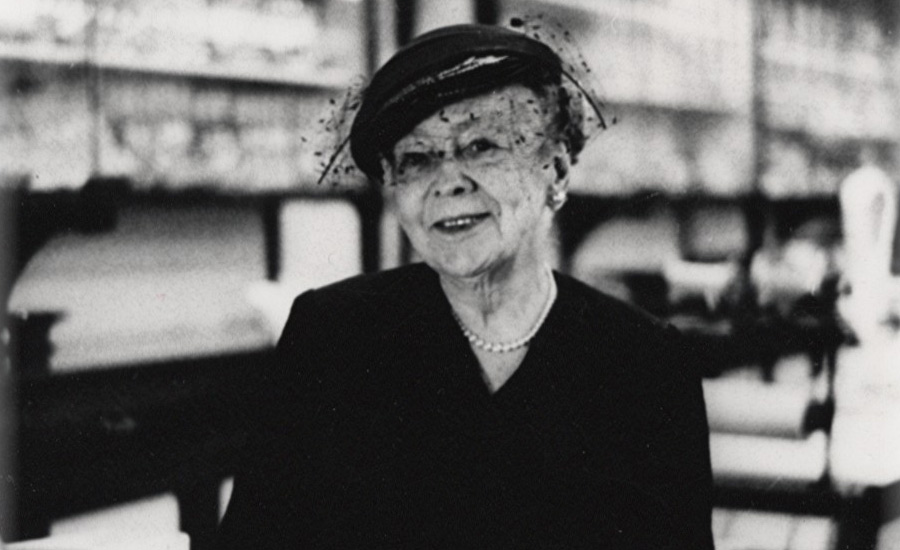
“She soon had her own counter inside the flower shop, then opened her own stores. This was in 1907, before women had the right to vote. She was really a trailblazer in her own right. Some of the things she made are now recognized as ‘food gifts’ which is exactly what we make today—Maud was doing it before it was a defined category,” Edwards adds.
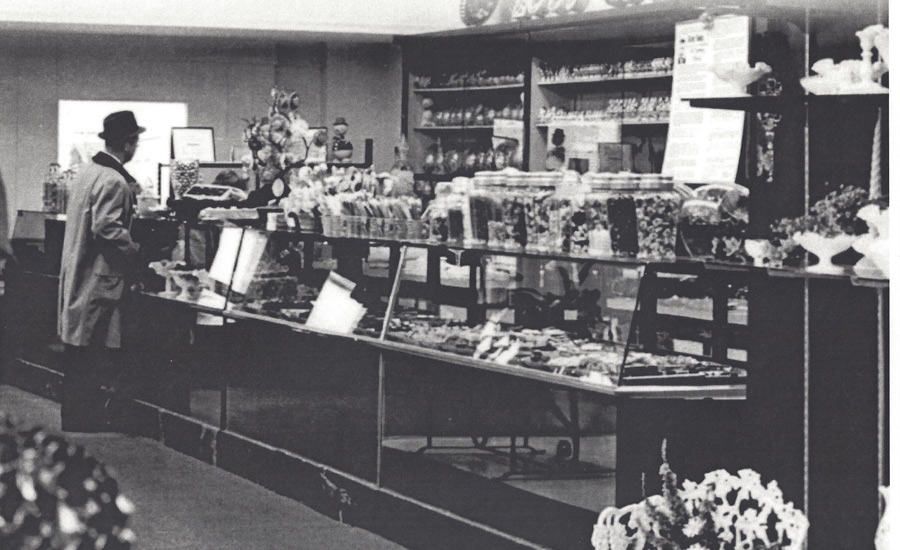
“Maud offered a Christmas tree kit that you could make with pieces of candy, a styrofoam cone, and a ribbon to tie it all together,” explains Lantinen.
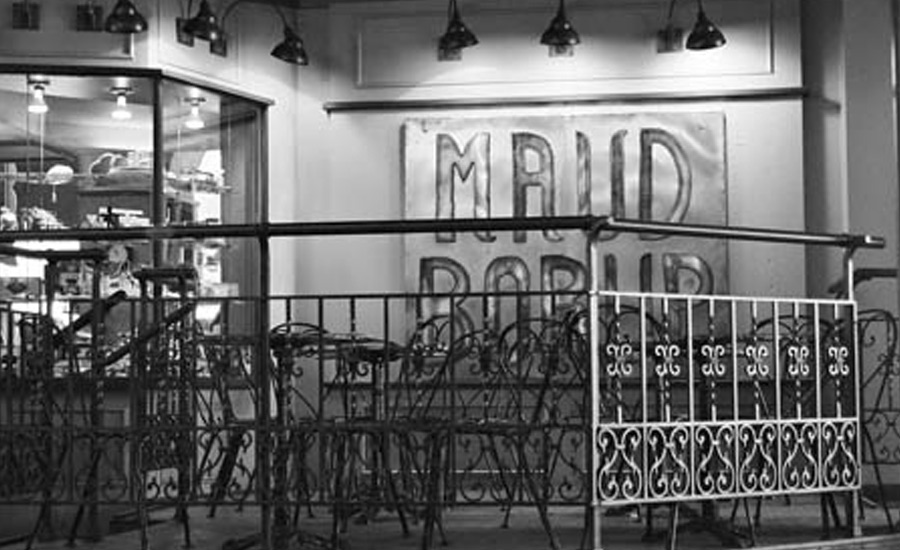
“Over the years, prominent people have purchased Maud Borup products, including the Queen of England; the manager of the Dodgers baseball team; Arnold Schwarzenegger; and Mrs. Pillsbury,” Edwards shares.
Current leadership
Lantinen got fired from her then-current job on a Friday. That night, she contacted the owners of Maud Borup and asked if she could network with them on Saturday morning. They had coffee, and Lantinen bought the brand on Monday.
“She got fired and bought a company over the weekend. Not a big deal,” Edwards jokes.
“When Christine bought the brand, she went to the banks, for a loan so she could start the company. They denied her a loan because she was unemployed and didn’t have a business plan. She decided to start selling and take [product] orders to prove that it was a viable business,” shares Edwards.
“She sold $2.5 million dollars’ of products in about two months. [She went] back to the banks, and they [still] said ‘No,’” says Edwards.
“Christine was talking to her dad about the issues she was having getting a loan. A family friend offered to pledge a piece of his farmland as collateral and get her the loan she needed. Within 10 months, she paid him back. Since that time, she's [been the] sole owner. We've never had any VCs or angel funding; growth has been organic. The business is a woman- and veteran-owned company, [since Christine is] a ten-year Army veteran,” Edwards adds.
“When Christine purchased the brand, revenue was about $100,000. To achieve the exponential growth she envisioned, she changed the business model from direct-to-consumer to business-to-business wholesale with minimum orders of 4,000 or more units,” Edwards explains. “Then she made a bold and gut-wrenching decision to close the retail stores.”
“When it came time to open a manufacturing facility, Christine wanted to give back to her hometown and the people who meant so much to her growing up. Our team has a good work ethic—a lot of people within the community work here. We employ about 200 of the 2,000 people that live in the area, about 10% of the city,” reveals Edwards.
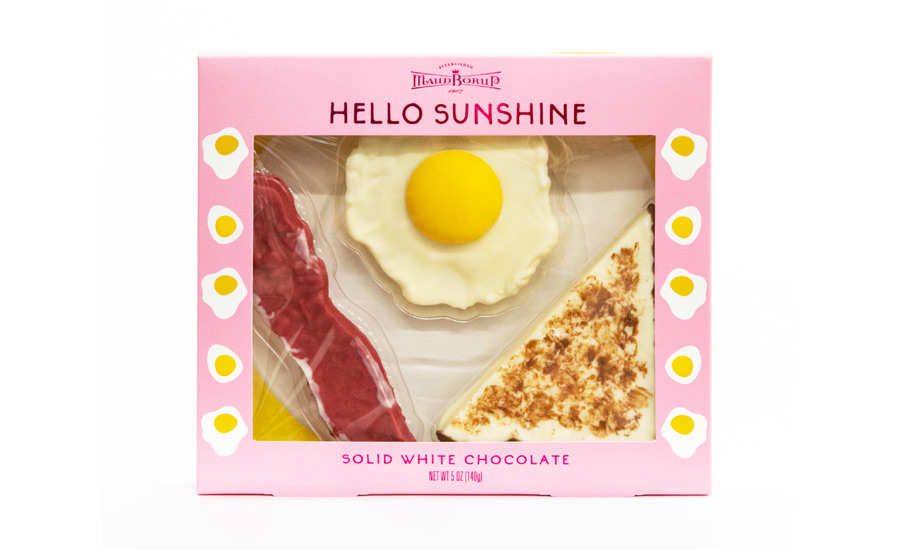
The company grew from $100,000 in revenue to $2.5 million in the first year alone.
“Today, we're a $50 million company and on track to be at $100 million in the next three to four years,” Edwards adds.
“We partner with our customers to figure out price points and formats,” she says. “We manufacture and pack in the U.S., which is really important to us, so that we can ensure product quality.”
Mission and vision
Maud Borup’s mission is to provide an indulgent, feel-good experience while building a more inclusive and sustainable economy. Its vision is to foster a world filled with happy people who know they are loved.
Lantinen wanted to reinvent classic sweets, since the company had started in 1907, and bring newness and freshness to a category that had been around for a long time.
“We're constantly looking at items that do well, and [thinking]: How do we put a fresh new spin on them?” Lantinen asks.
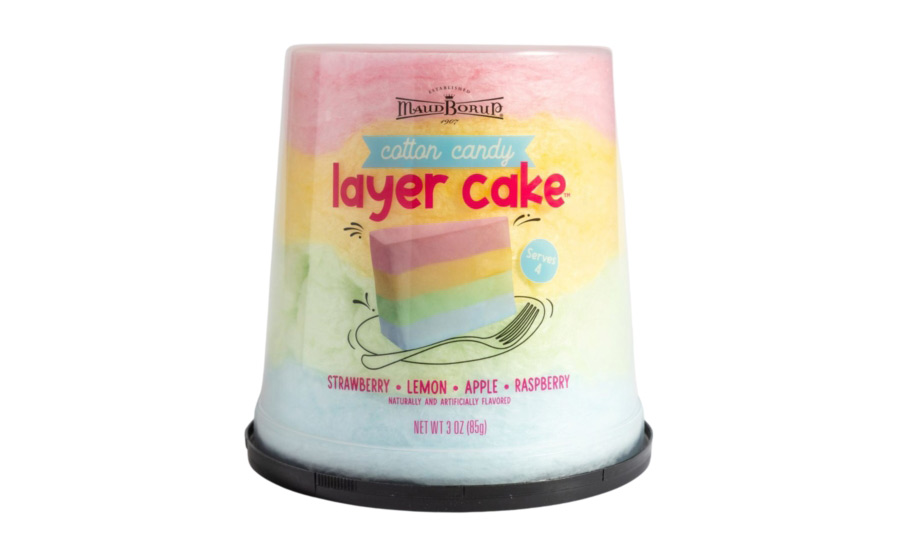
“We love to ask team members: how do you feel about [our] company vision? We talk about the ‘food gifting’ experience—who's buying the gift, and the thought that goes into it— are they giving it to a sibling, a mother, a child? It’s usually someone they love or care about, so a lot of thought goes into each purchase,” she explains.
“There's a lot of psychology behind the purchase of a food gift. Often we will see people shopping in stores picking through the display to find the perfect gift. If it's a little bit dented, or the product doesn't look great, it often doesn't sell—very different than a self-purchased product. Helping our team members understand the love that needs to go into creating the gift, and the love that product gives in return, makes team members feel good about what they're doing, and makes them also put extra thought into making items special for the end consumer,” Lantinen adds.
Courtesy of Maud Borup
The company has five overarching pillars under its mission statement:
- Product: Natural ingredients when possible and value-added hardlines; indulgent experiences
- Economic: Operate effectively and efficiently; be a cost-conscious supplier
- Social: Customer service/focusing on customer market and goals; Community (donations, employment, volunteerism)
- Environmental: Promoting business practices that respect Earth; zero landfill waste
- Safety: No product recalls or consumer complaints; providing a safe work environment
Retaining employees
The company likes to make sure its employees are happy and appreciated.
“Our employees are our best recruiting tool,” says Edwards. “There are team members who have their children, spouse, aunts, uncles, and friends [also working here], and we love to promote from within. Our director of production was referred to us by his aunt who works in the warehouse. He held various positions within the company and now oversees all three production facilities.”
The company holds an annual refresher and training meeting, and to make things fun, it hands out money and prizes for the best attendance, as well as for people who have been with the company the longest.
“We also have a ‘Golden Ticket’ program that was started to empower team members to recognize others for acts of kindness. Team members can give Golden Tickets when they see someone doing something unexpectedly helpful, shares Edwards.
“Little things are appreciated, like a team member who saw boxes in a corner, and picked them up, broke [them down], and put them in a [compactor]. The person with the most Golden Tickets at our meeting gets a prize, and this year, it was $500,” Edwards adds.
Sustainability, facility modifications
“We were ‘doing sustainability’ before it was cool,” comments Edwards. “Sustainability is core to who Christine is—her house has geothermal heat, and she collects rainwater for landscaping and reuses it. Those values have carried forward into the company. When we decided to apply for B Corp certification, we realized how much we had been doing all along but now needed to create documentation and trend reports to show our progress over the years.”
The company tries to conserve whenever possible. “We put up a 100’ wind turbine, and applied for a solar grant, which will allow us to generate about 30% of our electricity at our largest manufacturing facility,” Edwards says. “We have also achieved zero landfill waste. Nothing at any of our facilities ever goes into a landfill—our trash goes to a facility where it's processed and used to heat homes in the community,” she says.
The company has made over 35 modifications to be more sustainable including installing motion sensor lights and programmable heat and air options.
“Even things like plastic liners from incoming shipments are reused,” Edwards says. “When we [applied for] B Corp certification, it challenged us to examine every aspect of our business and compare [ourselves] to other food manufacturers in Minnesota—how much waste were we producing, and how we were processing it. We learned that our environmental impact was less than 1% of what the other companies were producing,” she shares.
“Last year, we processed over 60 tons of cardboard and got paid for recycling it. In the first quarter of this year, we recycled over 20 tons,” Edwards explains.
Obtaining B Corp status
“[B Corp is] a global certification for social and environmental performance. [We] want to use our business as a force for good, and educate people to do better at home and in the community,” says Edwards.
“B Corp examines all aspects of your business from a social and environmental perspective, digging deep into how the company operates and treats employees, customers, the community, and the environment as well as how the company is governed. It’s a thorough process that took us 26 months to achieve,” she adds.
“There are 334,000,000 companies in the world, and only 6,000 of them are B Corp Certified,” notes Edwards. “There are about 30 companies certified in Minnesota, so it really is an exclusive group,” Edwards explains.
Products
“Last year, Christine decided to segment our facilities by product type to be more efficient and streamline production by location. Le Center runs chocolate enrobing and molding. Plymouth makes cotton candy, and Delafield produces soft candies,” explains Edwards.
The brand’s facilities include:
- Chocolate production: Le Center, MN
- Soft Candy production: Delafield, WI
- Cotton Candy production: Plymouth, MN
- Corporate office: Plymouth, MN
In Delafield, Wisconsin, Christine came across a building that had some equipment we needed to produce soft candies, says Edwards.
“When we opened our cotton candy facility in Plymouth, it helped us find employees in a new labor market,” she notes.
Accomplishments and goals
Maud Borup’s 2022 accomplishments include adding 71 new team members (for a current total of 237, or over 300 when you include seasonal employees); and receiving Safe Quality Food (SQF) certification and recertification at all three manufacturing locations, as well as B Corp certification. The company also opened two manufacturing facilities, in Delafield and Plymouth.
“We're planning to add 38 new full-time team members this year, and again have our SQF social compliance audits, as well as researching Fairtrade chocolate,” Lantinen reveals. “We're hoping that by January 1, 2024, we will be using Fairtrade chocolate. That's a major initiative that our team is working on.”
“[We are] getting our Delafield soft candy manufacturing going. In Le Center, we have a new fast shell molding line that makes our hot cocoa bombs™ and other hollow candies like surprise eggs and chocolate bunnies,” she notes.
“Our value proposition remains very much the same as Maud’s: use quality, wholesome ingredients, [and sell products] at affordable prices so everyone can enjoy our sweet treats,” Edwards finishes.
Related articles:
Maud Borup speaks on sustainability and becoming a certified B Corp
Maud Borup introduces Grillable Desserts, Make Your Own Mini S'mores Kit

